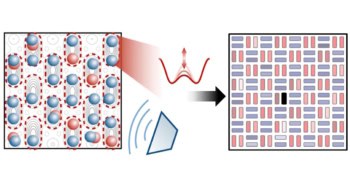In 1897 the Swiss physicist Charles Edouard Guillaume discovered an iron-nickel alloy with the unusual property that it did not expand when heated. This alloy, known as Invar, is now widely used in applications as diverse as watch springs and the "shadow masks" found in televisions and computer monitors. These masks prevent the electron beam in these devices from hitting the wrong phosphor dots on the screen; if they expanded when heated they would distort the picture. Although Guillaume won the 1920 Nobel prize for his discovery, a proper microscopic explanation of the unusual properties of Invar has had to wait until recent computer simulations by Mark van Schilfgaarde of Sandia National Laboratories in the US and Igor Abrikosov and Borje Johansson of Uppsala University in Sweden (Nature 400 46).
Invar has a face-centred cubic structure and is composed of about 65% iron and 35% nickel. In addition to its anomalously low thermal expansion, the alloy also has unusual elastic, thermal and magnetic properties. Most metals expand when they are heated because the amplitudes of the atomic vibrations inside the metal increase with temperature. It has long been known that the unusual magnetic properties of Invar somehow compensated for this expansion — Invar’s unusual properties disappear when its magnetization disappears at the Curie temperature. However, the exact mechanism was not clear.
Van Schilfgaarde and co-workers modelled a supercell of Invar containing 21 iron atoms and 11 nickel atoms. The electron spin at each atomic site was free to point in any direction. They found that at low temperatures the spins all pointed in the same direction: in other words the alloy was ferromagnetic. As the temperature was increased, however, the spins started to point in random directions and the volume of the supercell decreased. This reduction in volume compensates for the expansion caused by increased thermal vibrations.



